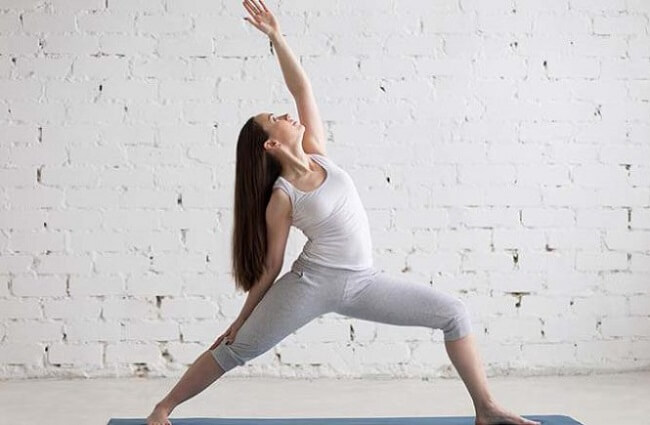If you have done thorough research on yoga, then you might have come across a particular term thousands of times – Vinyasa yoga.
This one particular term might have led your mind to a lot of questions right?
The wait is over. Scroll down and read below about what is vinyasa yoga.
What Is Vinyasa Yoga?
Vinyasa yoga is a stamina-increasing, mind-calming, strength-building exercise that ensures you get the most out of your personal yoga workout. It is a perfect yoga practice that will leave you feeling both grounded and accomplished.
When each morning it is time to roll out your yoga mat and practice, you ought to ask yourself, “What are my intentions today?” Do you hear yourself saying that you want to feel alive? If yes, vinyasa yoga is perfect for you.
How Does Vinyasa Yoga Benefits You?
Vinyasa yoga is a practice that encourages you to flow with rhythm through each movement while constantly keeping the mind and body in sync with the breath. Perhaps that is why it is also known as vinyasa yoga flow.
This form of yoga makes you aware of the power of your breath that makes you follow a rhythm from one yoga pose to another. It is a series of fast-paced yoga postures that focuses on syncing your body movements with the breath.
Vinyasa yoga is often described as freestyle Ashtanga yoga because it contains the same poses but is done in a less restrictive and more creative manner.
Vinyasa Yoga Flow: The Characteristics
To get a better understanding of vinyasa yoga, mentioned below are some of its characteristics that help in defining this style of yoga further.
- Yoga postures are usually repeated multiple times within the same session.
- Although the poses are similar to Ashtanga yoga, the order of the poses differ.
- Body movements are always linked with breath.
- Ujjayi Pranayama is the main breathing exercise used for breath control.
- Usually provides a slight cardiovascular response to the body.
Vinyasa Yoga Sun Salutation Sequence
Step 1. Pramasana
- Start by standing at the edge of the mat while keeping your feet pressed firmly together.
- Try to balance your body weight on both feet.
- Relax your shoulders and expand your chest.
- Gently lift your arms as you breathe in.
- As you exhale, bring your palms together in a Namaste position.
Step 2. Hastauttanasana
- While breathing in lift your arms up and push them back.
- Keep the biceps close to the ears.
- Make sure your whole focus is on stretching the body from the heels to the fingertips.
Step 3. Hastapadasana
- Gently bend forward towards the ground from the waist.
- While breathing out keep your spine absolutely erect.
- As you exhale completely, place your hands on the floor beside the feet.
Step 4. Ashwa Sanchalanasana
- While breathing in try to stretch your right leg back as much as you can.
- Bend your right knee and make it come in contact with the yoga mat.
- Once you are done positioning your body, look up.
Step 5. Dandasana
- Push your left leg back and make it parallel to your right leg.
- Bring your whole body in a straight line while inhaling.
Step 6. Ashtanga Namaskara
- After the 5th step, gently bring your knees down to the floor while exhaling.
- Take your hips back slightly and lift them a bit.
- Rest your chin and chest on the yoga mat.
- Both your knees, hands, and feet should also touch the ground.
Step 7. Bhujangasana
- After performing step 6, try to raise your chest into a cobra pose.
- Keep your shoulders away from your ears.
- Bend your elbows while performing this pose and look up at the ceiling.
Step 8. Adho Mukha Svanasana
- Lift your tailbone and hips towards the ceiling while breathing out.
- Bring your body into a V position and straighten your arms and legs as much as possible.
Step 9. Ashwa Sanchalanasana
- While inhaling, bring your right foot forward.
- Place your right foot between the two hands.
- Stick your left leg out on the floor and press your knee against the ground.
Step 10. Hastapadasana
- Bring your right foot forward while exhaling.
- Keep both your legs parallel to each other.
- Gently place your arms on the floor.
- If necessary, bend your knees.
Step 11. Hastauttanasana
- Roll your spine up while lifting your hands over the head.
- Bend backward a bit while pushing your hips slightly forward.
Step 12. Tadasana
As you exhale, try to first straighten your body and then relax.
While relaxing in this position, observe the sensations in your body.

